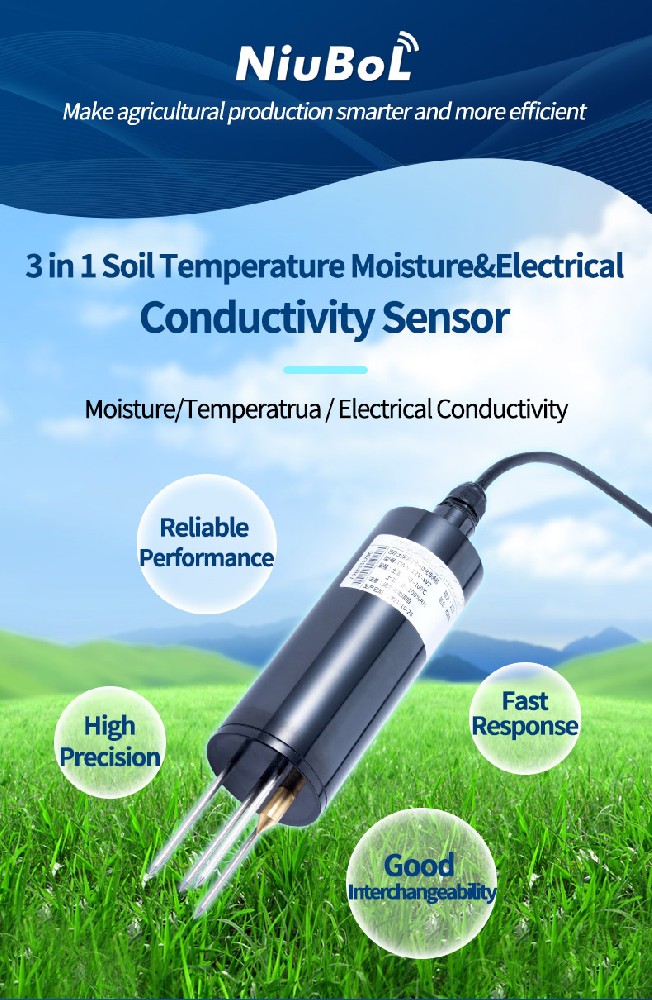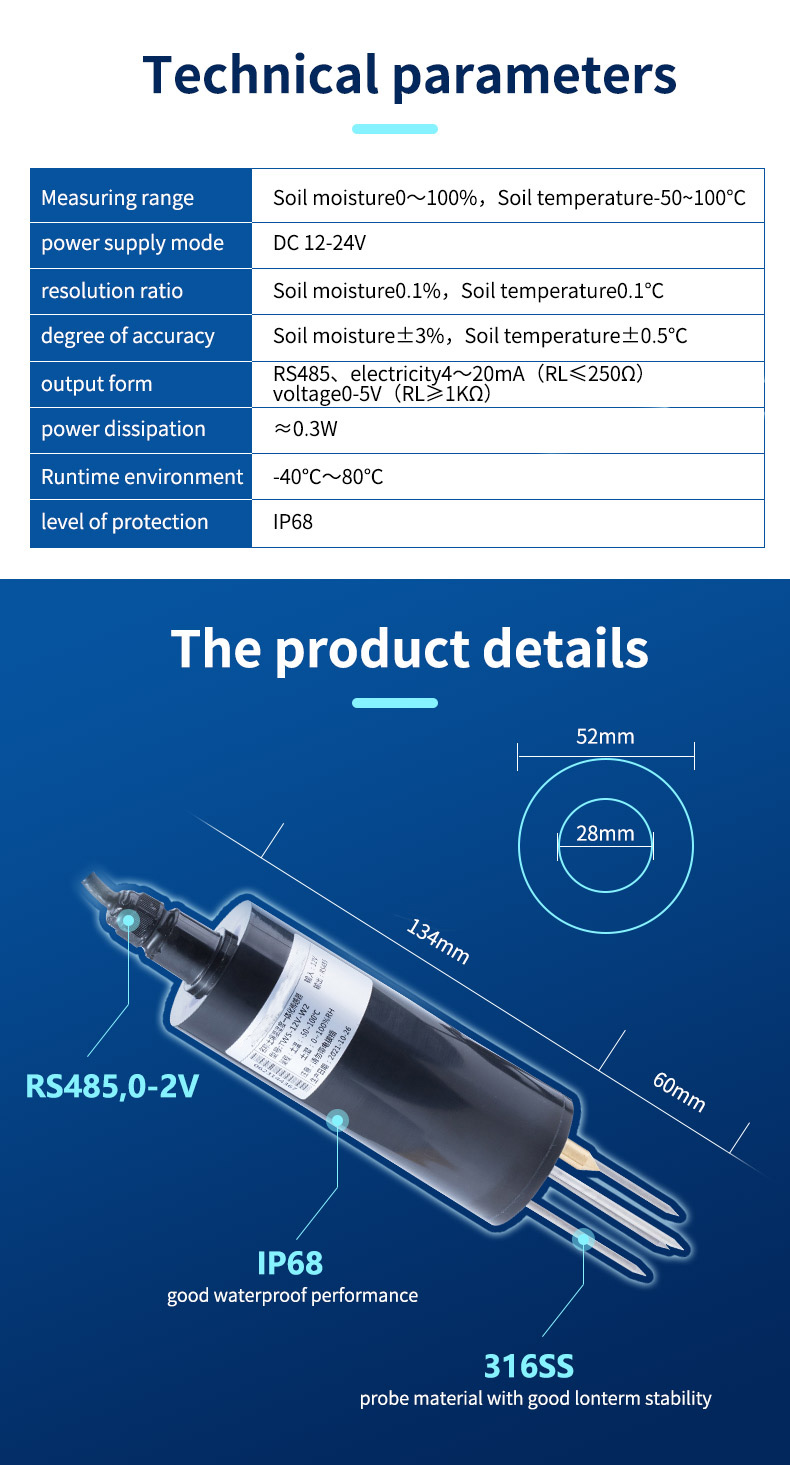

 咨询热线 15388025079
咨询热线 15388025079 时间:2022-05-10 21:30:22 浏览量:975
土壤湿度传感器分类
经过半个多世纪的发展,土壤水分传感器的种类和形式已经非常丰富。湿度的测量具有一定的复杂性,人们所熟知的毛发湿度计、干湿球湿度计等已经不能满足现代要求的实际需要。因此,人们开发了各种土壤水分传感器。湿度传感器按测量原理一般可分为电容式、电阻式、离子敏感式、光强度式和声表面波式。

1.电容式土壤湿度传感器
电容式土壤水分传感器的敏感元件为湿敏电容器,主要材料一般为金属氧化物、高分子聚合物等,这些材料对水分子有较强的吸附能力,吸附水量随环境湿度的变化而变化。
由于水分子的电偶极矩很大,材料吸水后介电常数发生变化,电容器的电容值也随之变化,电容值的变化转换成电信号,便可以监测湿度。

湿敏电容器一般采用高分子薄膜电容器,当环境湿度变化时,湿敏电容器的介电常数发生变化,其电容量也随之变化,电容量变化量与相对湿度成正比,利用这一特性可以实现湿度的测量。
常用的电容式土壤水分传感介质有:多孔硅、聚酰亚胺,此外还有聚砜(PSF)、聚苯乙烯(PS)、PMMA(线性、交联、等离子聚合)。
2.电阻式土壤湿度传感器
电阻式土壤水分传感器的敏感元件是湿敏电阻,其主要材料一般是电介质、半导体、多孔陶瓷等。这些材料对水有很强的吸附性,吸水后电阻率/电导率会随着湿度的变化而变化,所以湿度的变化可以导致吸湿电阻阻值的变化,把电阻值的变化转换成所需要的电信号。

例如氯化锂的水溶液在基片上形成薄膜,随着空气中水蒸气含量的增多或减少,薄膜吸湿除湿,溶液中盐分浓度降低和升高,电阻率也随之升高和降低,两级间阻值时增时减。再如多孔陶瓷湿敏电阻,陶瓷本身是由许多小的晶体颗粒组成,其中大部分孔隙与外界相通,水分子可通过孔隙吸附,引起离子浓度的变化,导致两电极间电阻的变化。
3. 离子土壤湿度传感器
离子敏感场效应晶体管(ISFET)属于半导体生物传感器,是由P. Bergeld于20世纪70年代发明的。ISFET通过栅极上不同的敏感薄膜材料直接与被测溶液中的离子缓冲溶液接触,进而可以测得溶液中的离子浓度。
离子敏感器件由。离子选择膜(敏感膜)和转换器两部分组成。敏感膜用来识别离子的种类和浓度,转换器把敏感膜感应到的信息转换成电信号。离子敏感场效应晶体管是在绝缘栅上加一层敏感膜制成的,不同的敏感膜检测的离子种类也不同,从而使其具有离子选择性。
上一页:土壤湿度传感器的常见类型
下一页:三种土壤水分传感器的分析与比较
相关推荐
相关产品